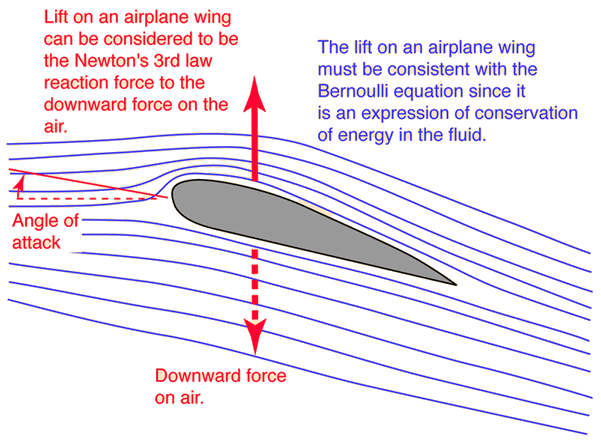The Angle of Attack for an Airfoil
While an airplane wing is one of the most popular examples of the Bernoulli effect , many discussions allege that the Bernoulli lift is actually a small part of the lift force which allows the aircraft to fly. You can argue that the main lift comes from the fact that the wing is angled slightly upward so that air striking the underside of the wing is forced downward. The Newton's 3rd law reaction force upward on the wing provides the lift. Increasing the angle of attack can increase the lift, but it also increases drag so that you have to provide more thrust with the aircraft engines.
Some pilots have been known to get a bit testy about their lift being attributed to the Bernoulli effect, and reply "Then how do you suppose we can fly the plane upside down?". It looks a bit tricky, but you can adjust the attitude of the aircraft when upside down to give the proper angle of attack to get lift.
The discussions of "Bernoulli vs Newton" continue, but aerodynamicists such as Eastlake take the point of view that they are ultimately equivalent models and that neither is incorrect. In his wind tunnel testing at the Department of Aerospace Engineering, Embry-Riddle Aeronautical University, the Bernoulli approach is preferred because it can be tested more readily with the type of measurements which can be made in a wind tunnel. Making numerous point measurements around the airfoil and summing (integrating) them in the context of a Bernoulli model gives consistent modeling of observed lift forces.
Which is best? Bernoulli or Newton for describing lift?
Illustration of different angles of attack
Those who advocate the Bernoulli approach to lift point to detailed measurement of the pressures surrounding airfoils in wind tunnels and in flight. Such pressure measurements are typically done with Pitot tubes. Correlating the pressures with the Bernoulli equation gives reasonable agreement with observations.
